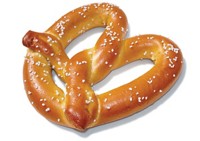Advertisement
Grab your lab coat. Let's get started
Welcome!
Welcome!
Create an account below to get 6 C&EN articles per month, receive newsletters and more - all free.
It seems this is your first time logging in online. Please enter the following information to continue.
As an ACS member you automatically get access to this site. All we need is few more details to create your reading experience.
Not you? Sign in with a different account.
Not you? Sign in with a different account.
ERROR 1
ERROR 1
ERROR 2
ERROR 2
ERROR 2
ERROR 2
ERROR 2
Password and Confirm password must match.
If you have an ACS member number, please enter it here so we can link this account to your membership. (optional)
ERROR 2
ACS values your privacy. By submitting your information, you are gaining access to C&EN and subscribing to our weekly newsletter. We use the information you provide to make your reading experience better, and we will never sell your data to third party members.
Analytical Chemistry
Newscripts
Vodka: Analyzed, Filtered, And Poured
by Lisa M. Jarvis
June 28, 2010
| A version of this story appeared in
Volume 88, Issue 26

Amid the current cocktail frenzy, in which “mixologist” is a genuine job title and a perfectly concocted drink can cost upward of $20, VODKA has become the red-headed stepchild of the spirits world. Check out the menu at Death & Co., one of a dozen or so bars in New York City known for their creative drinks: There is nary a mention of vodka. The spirit is so lacking in complexity, connoisseurs say, you might as well drink rubbing alcohol. It’s enough to make a person embarrassed to order a vodka tonic these days.
Ironically, vodka’s simplicity has made pinning down the flavor components difficult. Although chemists have spent years ruminating on the hundreds of flavor molecules in a bottle of scotch, vodka has remained elusive. “People have been struggling for years to use chemical analysis methods to understand minority compounds in vodka and basically not gotten anywhere,” says Dale W. Schaefer, a chemical engineering professor of the University of Cincinnati.
Thanks to work by Schaefer and several of his colleagues, the vodka picture is getting clearer. The scientists used nuclear magnetic resonance, Raman, and Fourier transform infrared spectroscopies to analyze five brands of vodka—Belvedere, Grey Goose, Skyy, Stolichnaya, and Oval—in an attempt to pin down the differences in what is otherwise a simple mixture of ethanol and water (J. Agric. Food Chem. 2010, 58, 7394).
Their analysis enabled the identification of small levels of ethanol-water clusters, with E•5.3H2O emerging as the predominant hydrate. Although the percentage of alcohol was roughly the same for the five vodkas studied, the “structurability parameter,” a measurement of how far the hydrate content deviated from a pure ethanol-water solution, differed. Oval was closest to a pure solution, and Stoli was furthest away.
“So how do vodka drinkers develop brand preference?” Schaefer and coworkers ask in their article. “Our answer is structure. Beverages with low structurability are likely to be perceived as watery, because the fraction of water clusters is higher than the brand with high structurabilty.” Schaefer stresses that the relationship between structure and taste is purely a hypothesis.
All this vodka purity and taste talk led me to wonder about a household experiment I’ve been meaning to try. As urban legend has it, one can replicate the smoothness of an expensive brand by passing cheap vodka—for example, Georgi Vodka—through a Brita filter, which is primarily made up of activated carbon.
It turns out those industrious fellows on the Discovery Channel’s “MythBusters” have already done a thorough taste test of filtered and unfiltered vodkas. They found that although the flavor of cheap vodka was improved after multiple filtrations, it was still far from that of a top-shelf spirit.
Schaefer isn’t surprised by this result. The literature suggests that cheap vodka has a much higher percentage of impurities than the expensive stuff, he points out. “We know from computer simulations that impurities degrade the structurability of the vodka,” he says.
Finally, I’m led to question yet another urban myth: that it’s easier to get over a night of vodka consumption than to recover from other liquor binges. A recent article compared the hangover effects of vodka and bourbon, showing that each liquor affected response times and sleep equally harshly (Alcohol Clin. Exp. Res. 2010, 34, 509). The study, carried out on a group of “healthy, heavy drinkers,” ages 21 to 33, found only one difference between the two spirits: hangover severity. People feel worse after drinking bourbon, the authors say.
So there you have it. Vodka might not be trendy, but your head will hurt less the next morning.





Join the conversation
Contact the reporter
Submit a Letter to the Editor for publication
Engage with us on Twitter